Update: The Xero Shoes HFS was re-released in February 2025 due to popular demand. Check them out on the Xero Shoes website here!
At the moment, I feel like every time I get a new running shoe; it becomes my new favorite. And today’s shoe is no different. The Xero Shoes HFS is the closest to barefoot I’ve felt in any enclosed upper shoe yet.
Affiliate Disclosure: By clicking through the links on this page and purchasing the products, you’ll be helping me out. This is done because I receive a kickback from the sellers at no extra cost to you! Thank you so much for supporting us!
XeroShoes.com
HFS
(45-day exchange period)
If you’re looking for your first barefoot shoe, or you’re looking to improve your running gait, the HFS will be a superb choice for you, as long as you get the fit right.
Keep reading to discover why I love this shoe and get the all-important factors in sizing and shoe fit.
Let’s start with the fit because it’ll never work if a shoe isn’t comfortable.
You’ll need at least a 1/2 size larger than your normal size! Xero shoes is a smaller company, and with that sometimes comes minor inconsistencies. In this case, the size is a little off. Even on their website, they suggest ordering a 1/2 size up. I’ve personally opted for a full-size larger.
If you’ve even worn its trail sibling, the Mesa Trail, it fits almost identically.
A foot with normal to high volume and width is ideal for the HFS. The shoe is neither narrow nor wide nor shallow or deep. Because of that, I’d suggest the only person who is not ideal for this shoe is someone with narrow or shallow feet. Anyone with average to wide and deep feet should do perfectly with the shoe.
The toe box is large, wide, and deep. Most barefoot shoes boast about their wide-toe boxes, but some forget about the depth. As with most Xero Shoes, there is ample height in the toe box, allowing your toes to wiggle with complete freedom.
The soft upper contributes to a sock-like feeling. The upper is made mainly from a thin mesh material that wraps around your foot almost to the point that you forget you’re wearing shoes.
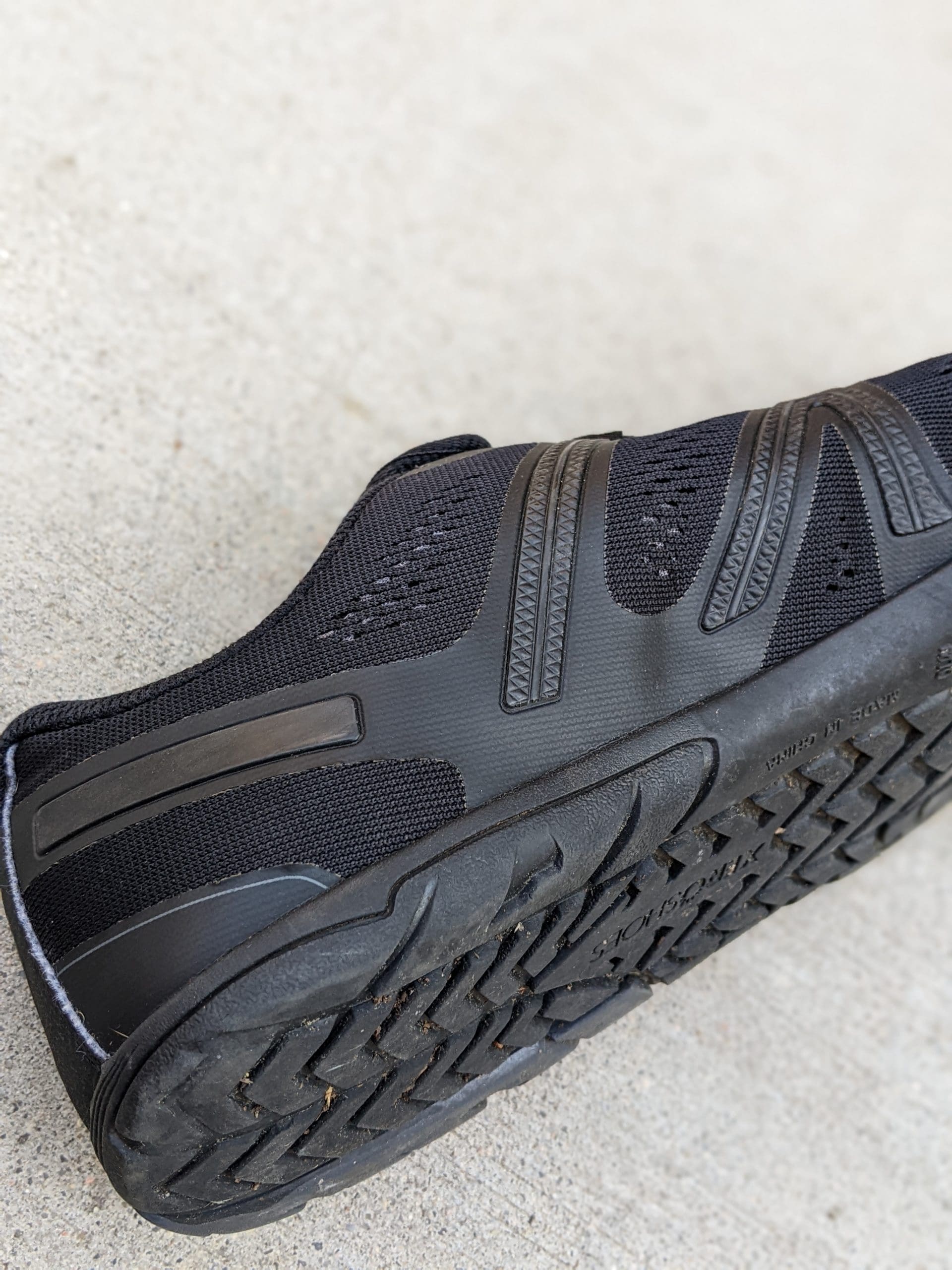
An unstructured heel provides a perfect heel lock and no chance of rubbing. If you’re looking for a true barefoot motion, there should be little to nothing standing in the way of your foot mechanics with these shoes. Stiff heel counters often change your gait and contribute to horrible sore spots and blisters. With the HFS, you’ll find a minimally padding heel that morphs to your unique heel shape, lending to a perfect fit.
High volume foot? Step right into the HFS. I’ve got a reasonably standard volume foot, and I had to crank the laces a little tight to achieve the perfect fit. So, if you have a high-volume foot, you’ll have more than enough room without breaking out the top of the upper. On the contrary, if you have a low-volume foot, you may have to take a pass on the HFS. Even at only 1/2 size larger than your standard shoe size, I believe the upper will drown your foot. If that’s the case, I’d suggest looking at the Vivobarefoot Primus Lite III instead.
The combination of laces and straps helps to lock your foot solidly onto the platform. Xero Shoes are known for their sandals, and that design has carried over to the shoes. The straps loop through the laces and extend down to the base. So as you’re tightening your laces, the straps are sinching around your foot, creating a locked-in feeling.
Which minimal running shoe is for you?
Take a quick 5-question quiz to identify the perfect minimal running shoe for your feet! You'll get both road and trail options based on your answers!
Why do I love this shoe so much?
Because it’s almost like I have nothing on my feet!
The super flexible thin upper combines comfort and freedom. I think a shoe is at its best when you don’t even know it’s on your foot. And this is the case for the HFS. The upper wraps around your foot in a forgiving way, allowing for intricate movements many other shoes restrict.
The 5mm outsole and 3.5mm insole are soft enough and flexible enough not to inhibit natural foot motion. The HFS offers one of the most natural barefoot rides on the market, and if it’s not close enough to the ground for you, take out the insole. The rubber used for the outsole is soft and forgiving to the point where sensory feedback is at its maximum.
At only 6.8oz for a Men’s US9, it feels like you’re only wearing socks. Lightweight shoes are essential for a natural foot strike. Every ounce gained in the shoe department means you have to work a little bit harder to propel your foot through the air, harming your overall running efficiency. 6.8oz is currently reaching the realms of possibility with running shoes and is a real contender for the lightest shoe on the market.
I wouldn’t choose this shoe for Crossfit or the gym. Because the upper is so thin and forgiving, lateral movement causes a little slippage over the side of the shoe. The movement is not to the extent that some knit uppers have, but the HFS doesn’t lend itself to highly dynamic sports such as basketball or tennis.
It’s hard to overtighten the shoe. Some people like crank down on the laces to get a “secure” fit. I usually advise against such actions, but it’s not such a worry in this shoe. Because the flexible materials lay perfectly flat over the foot, creating hot points or sore spots is difficult. The material becomes almost like a second skin.
XeroShoes.com
HFS
(45-day exchange period)
There’s always a drawback when it comes to lightweight, thin materials. And that’s longevity.
Xeros Shoes 5000-mile guarantee is incredible. Don’t believe the outsole will see more than the industry standard 400 miles? Well, put their claims to the test! If you blast through the outsole in less than 5000 miles, you trade them in on warranty!
The 5000-mile guarantee only covers the outsole. If you read through the fine print of the warranty, it mentions “5000-mile sole guarantee”, not shoe guarantee. So if you blow out the sides of the shoes, it’s no can-do. In the case of the HFS, this is likely where you’ll see breakdown first.
Thin materials are excellent at first but don’t stand up to the beating. Even though my shoes are not showing signs of wear yet, I don’t imagine I will be hitting high numbers in the HFS. In some areas, the materials are so thin that constant rubbing will make a hole reasonably fast. This is pure speculation, but compared to its big brother, the Xero Shoes Prio, the lightweight choices will likely prove a trade-off against durability.
There’s minimal stitching used in the upper construction. Thick thread and double stitching may be a thing of the past, but there’s something to be said about a good old stitch. Most of the upper overlays are welded on, creating a point of weakness, especially at crease points. In the HFS’s defense, though, at the point where the shoe flexes near the forefoot, there is a distinct lack of overlays, allowing for smooth flexibility. I assume this is a design choice to extend the shoe’s longevity.
If you’ve read my reviews before, you might know that I like to perform a quick gait analysis of myself running in the shoes. I feel it gives another dimension to a show review to help you (and me!) make better shoe-buying decisions.
To perform the analysis, I use University grade measurement pods to estimate ground reaction force, peak impact force, pronation angle/speed, and much more.
To gather the data, I ran on a relatively flat 0.5-mile trail, running the first half at a 5:15 min/km speed and the second half at 4:10 min/km.
As a comparison, I also performed the test with 3 other shoes. So these results will show data for:
- Xero Shoes HFS
- Vivobarefoot Primus Lite III
- Altra Escalante (25mm of cushion but still zero-drop)

Results
First up, we’re going to look at Impact forces. This is the force exerted in a verticle direction when my foot first contacts the ground.
Impact Forces
| Shoe | Xero Shoes HFS | Vivobarefoot Primus Lite III | Altra Escalante 3 |
| Impact Force (G) | 8.3 | 6.9 | 7.4 |
Here, we see that the great impact forces were seen in the Xero Shoes HFS. This makes a little sense because it’s the most minimal shoe out of the set.
But then again, the Vivobarefoot Primus shoes are minimal too, and that scores the lowest.
What I take from this is that the HFS is a “true” barefoot shoe and a great barefoot training tool. But always ensure that you don’t take your running too far with these too quickly!
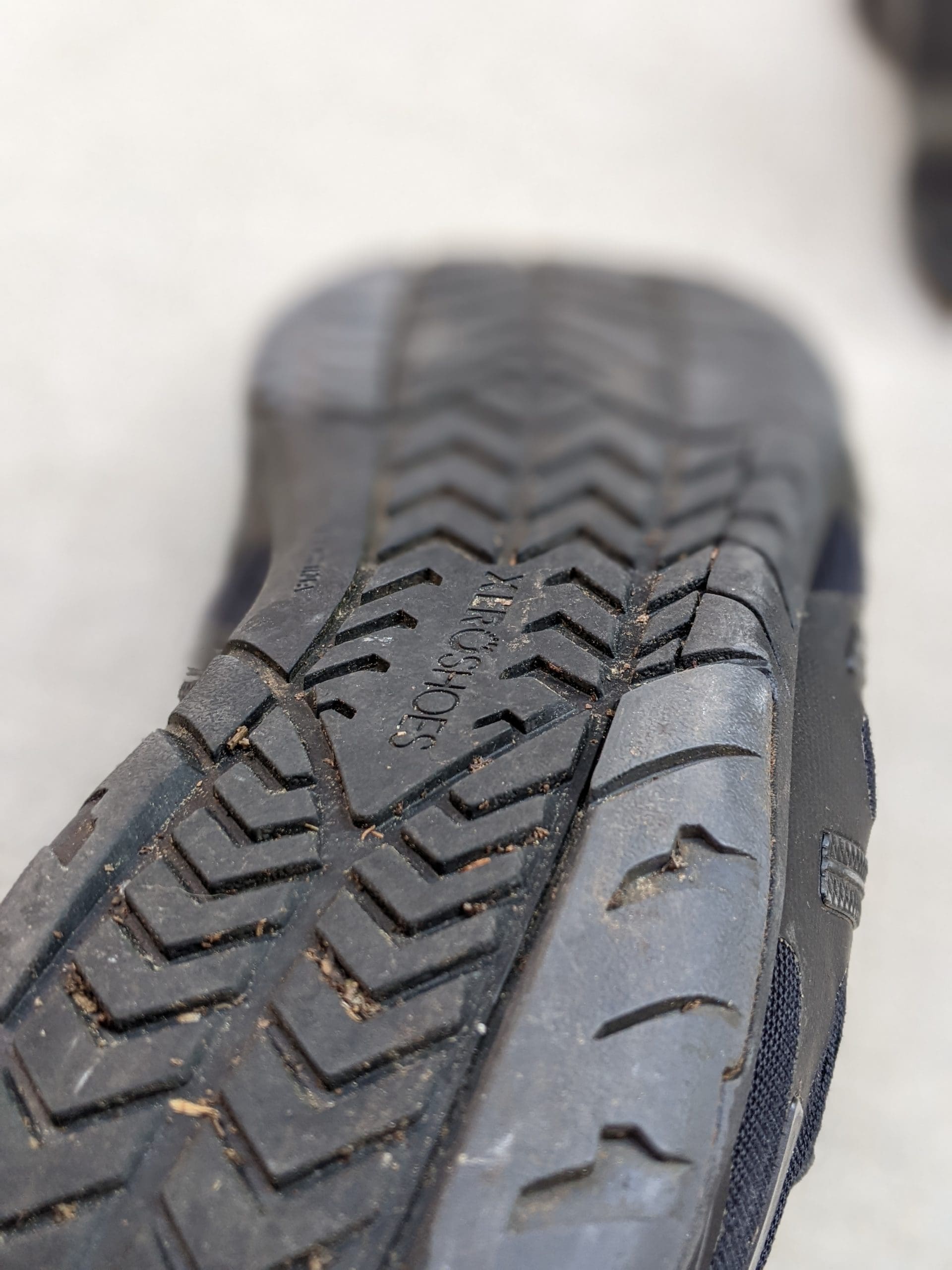
Pronation
Pronation is the angle measurement of the ankle rolling in or out from the foot’s initial contact position.
Many hear about overpronation and expect that they need a well-structured shoe to “correct” pronation. In fact, some amount of pronation is expected and is an essential shock absorption mechanism.
There are two interesting data points of pronation. How far your ankle travels from side to side during a step, and how fast it happens.
| Shoe | Xero Shoes HFS | Vivobarefoot Primus Lite III | Altra Escalante 3 |
| Pronation Angle (degrees) | -20.8 | -16.2 | -19.0 |
| Pronation Velocity(degrees/sec) | 851 | 811 | 798 |
Again, the Xero Shoes HFS is scoring the highest, which for some people may not be the best thing.
The shoe is causing the most pronation, and I would put that down to its minimal nature. The materials are so forgiving that there’s no slowing of my ankle roll, and I’m relying 100% on my connective tissues.
That brings us to the same conclusion as the impact forces.
As a training shoe, the Xero Shoes HFS is great! It allows your feet to do what they are built to do. But don’t expect to go long distances out of the box!
If you can’t tell from this review. I’m a big fan of the Xero Shoes HFS.
It’s a proper minimal shoe, and I believe it’s the best shoe on the market if you want to improve your barefoot gait, either for beginners or advanced barefoot runners.
Just remember, if you’re new to running barefoot, build up slowly. And imbalances in your gait will be entirely exposed by these shoes, and it could lead to injury fast.
XeroShoes.com
HFS
(45-day exchange period)
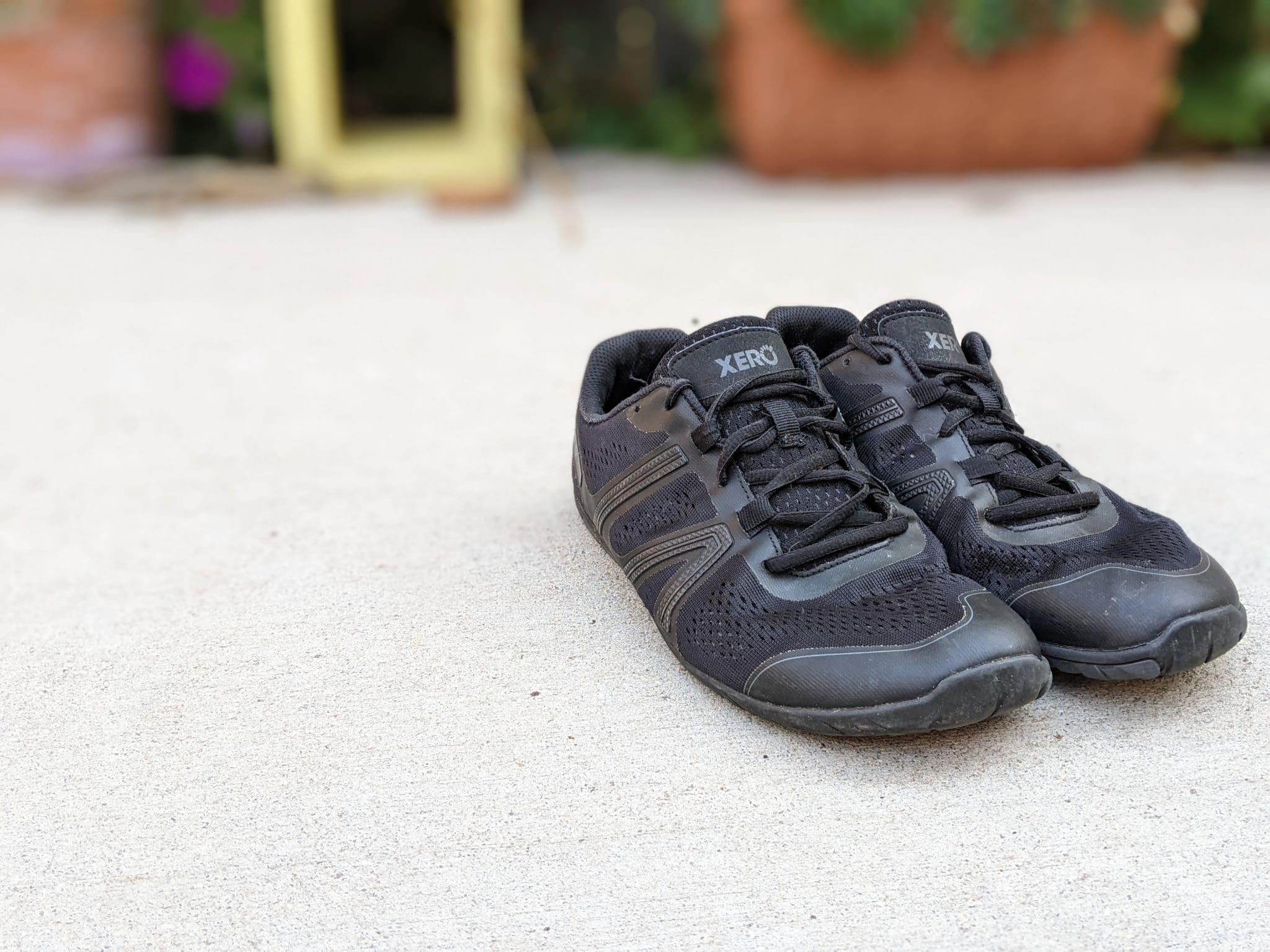
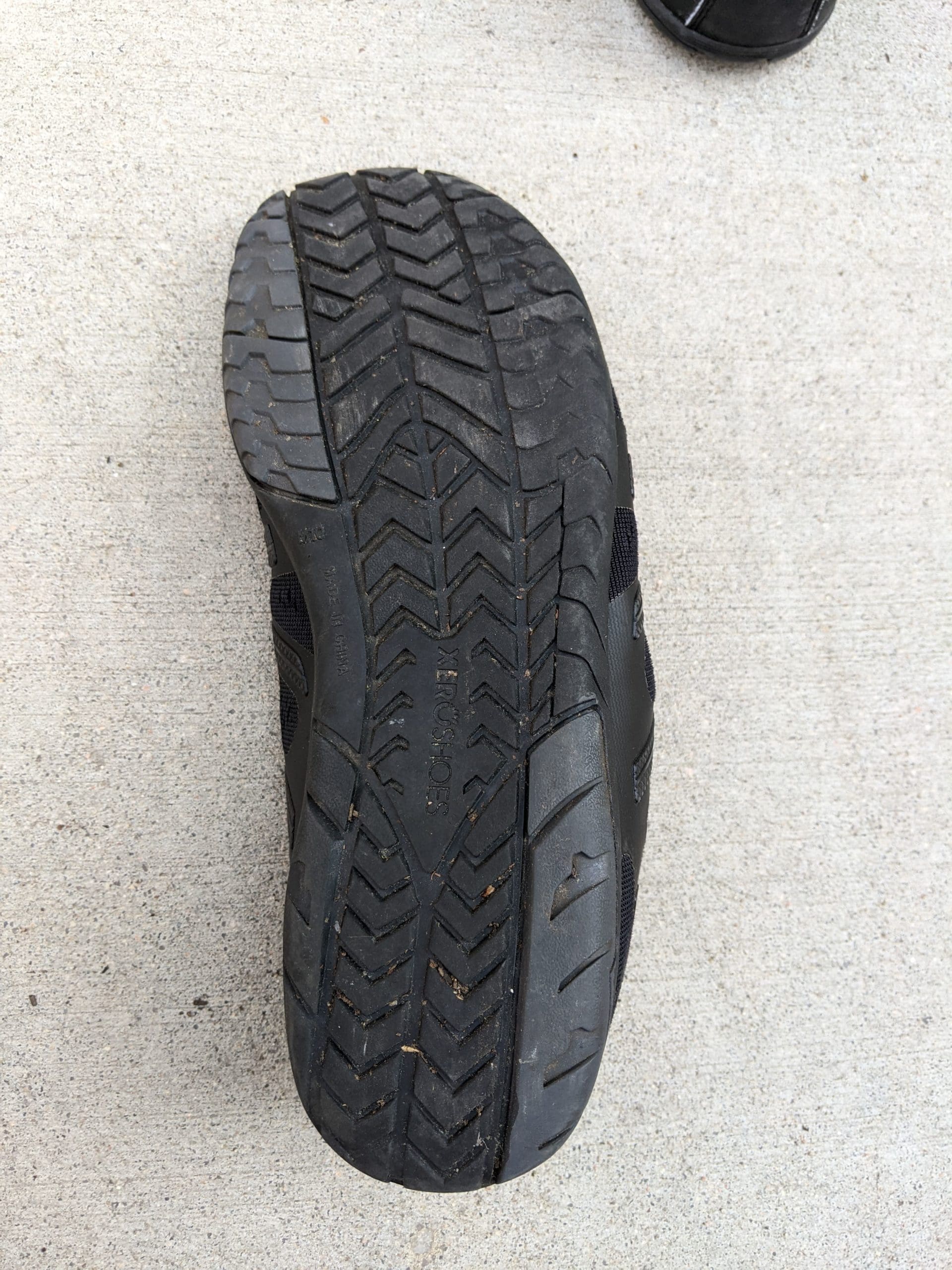
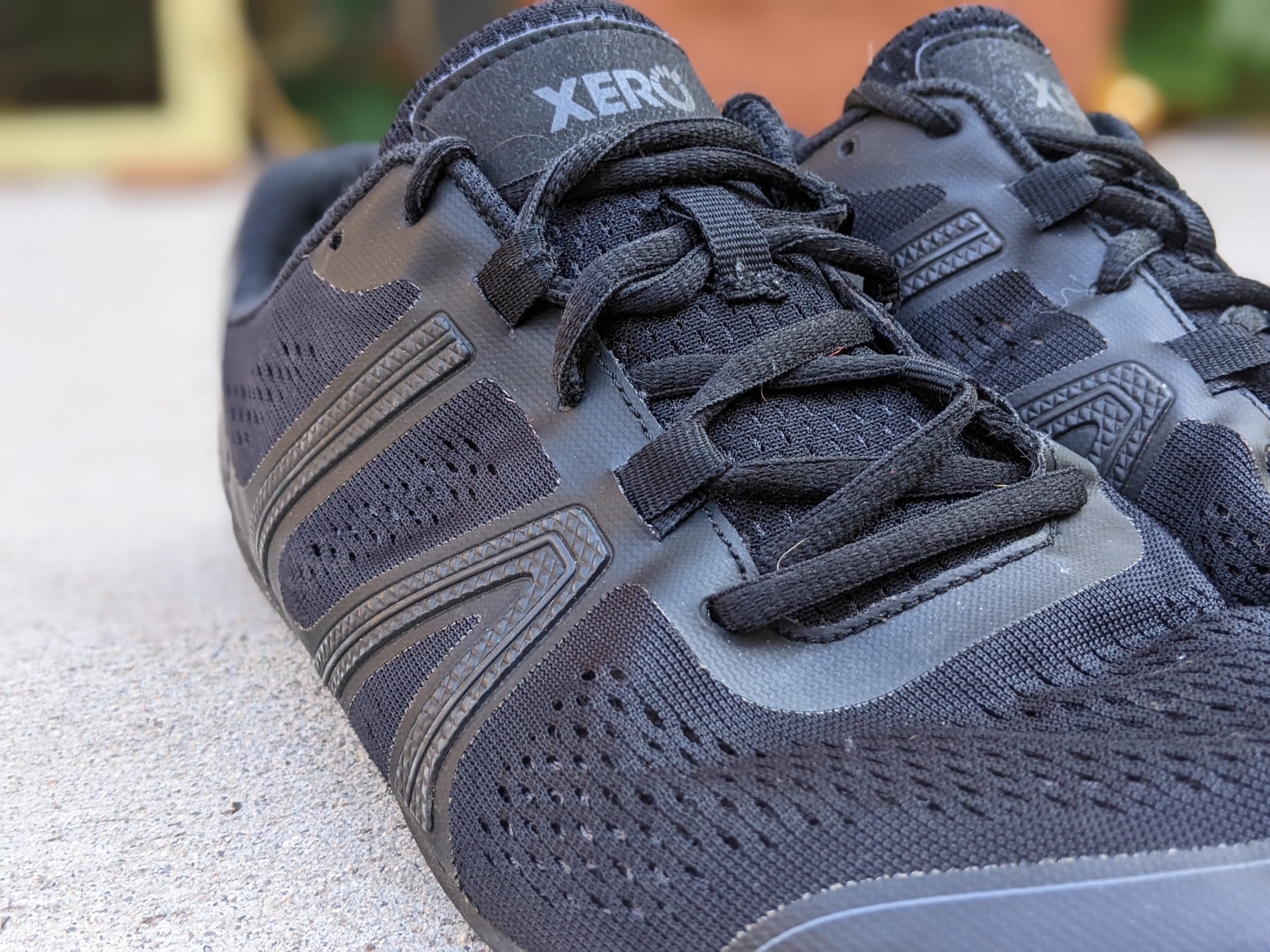
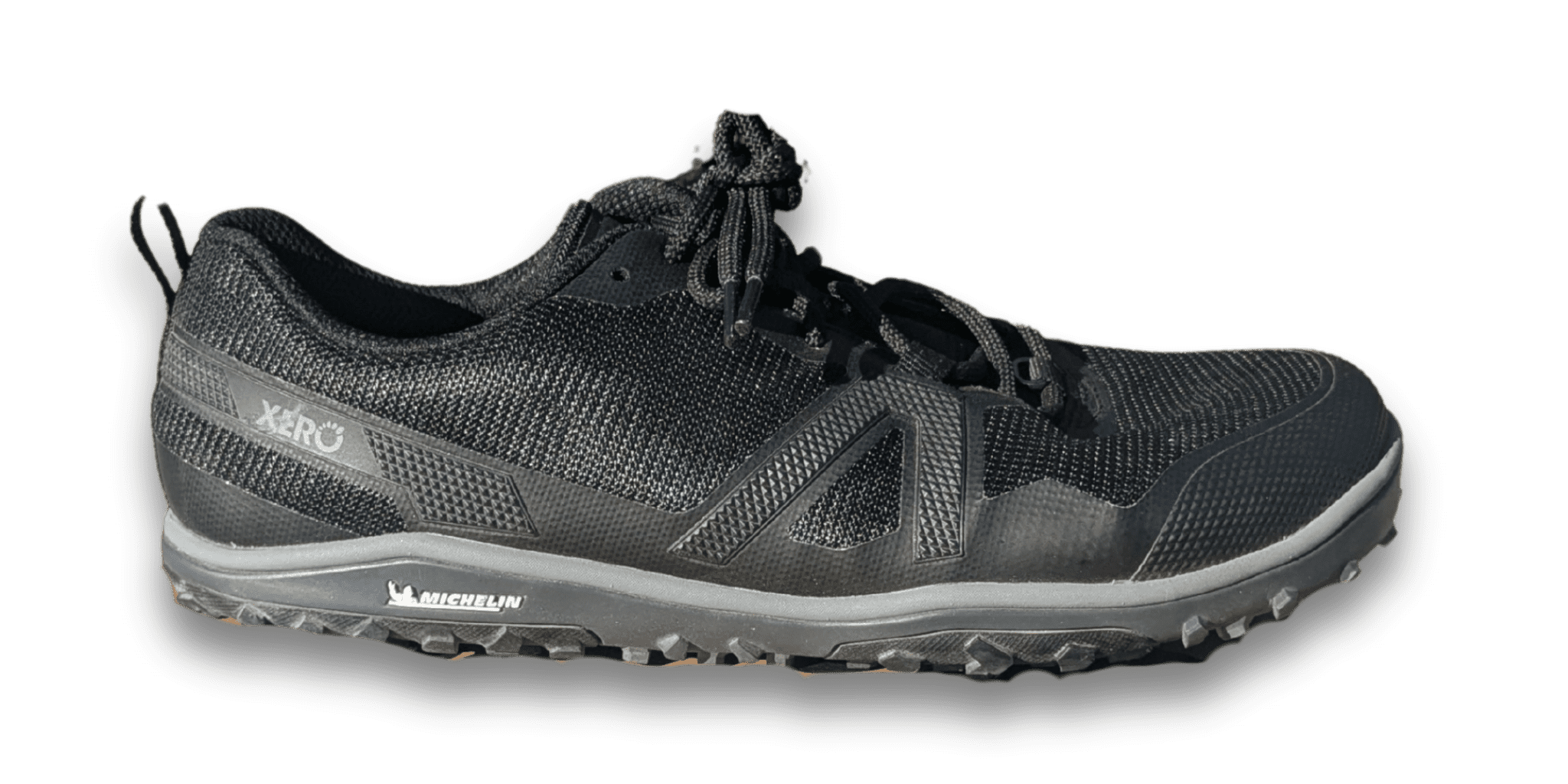
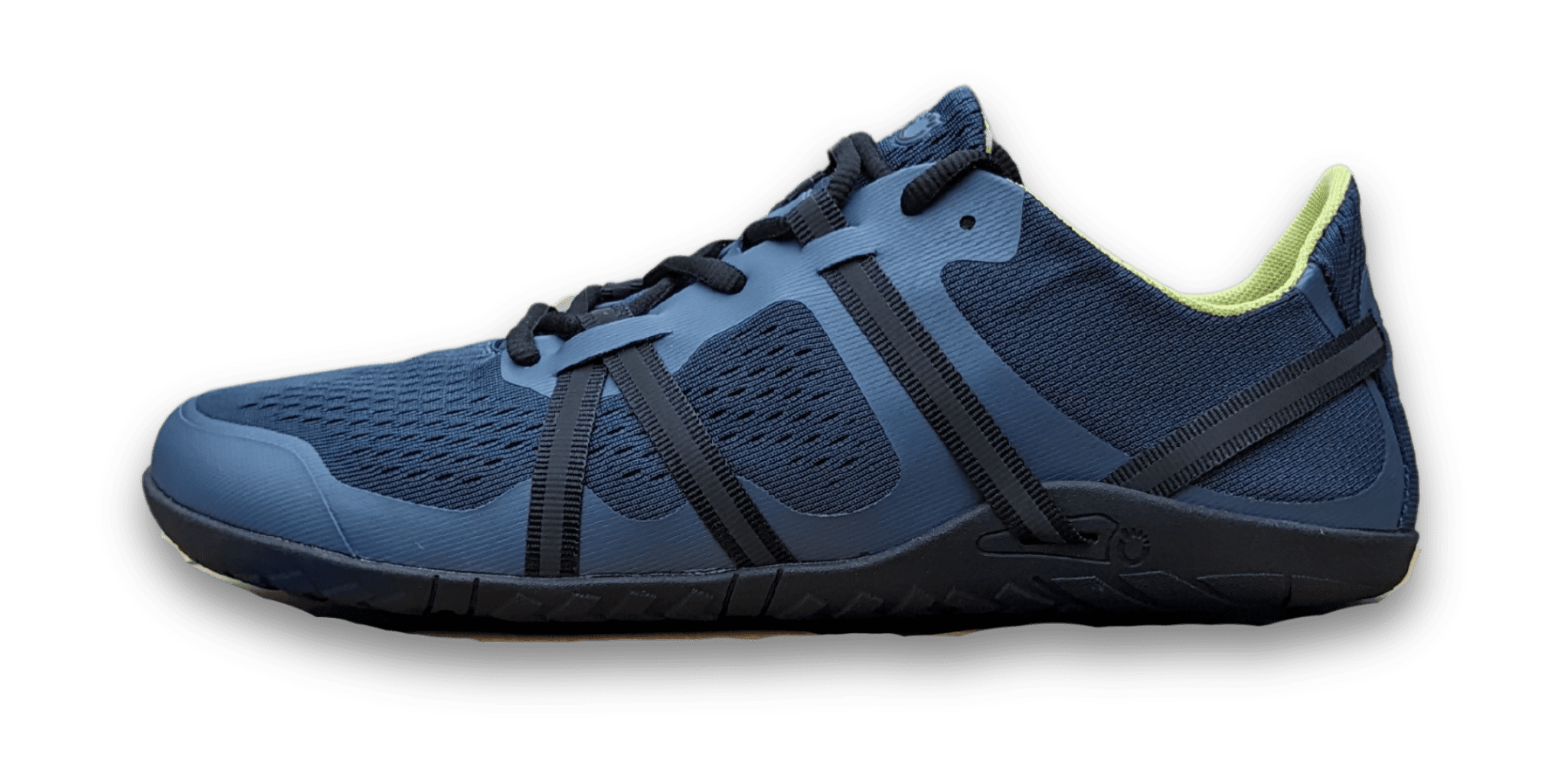


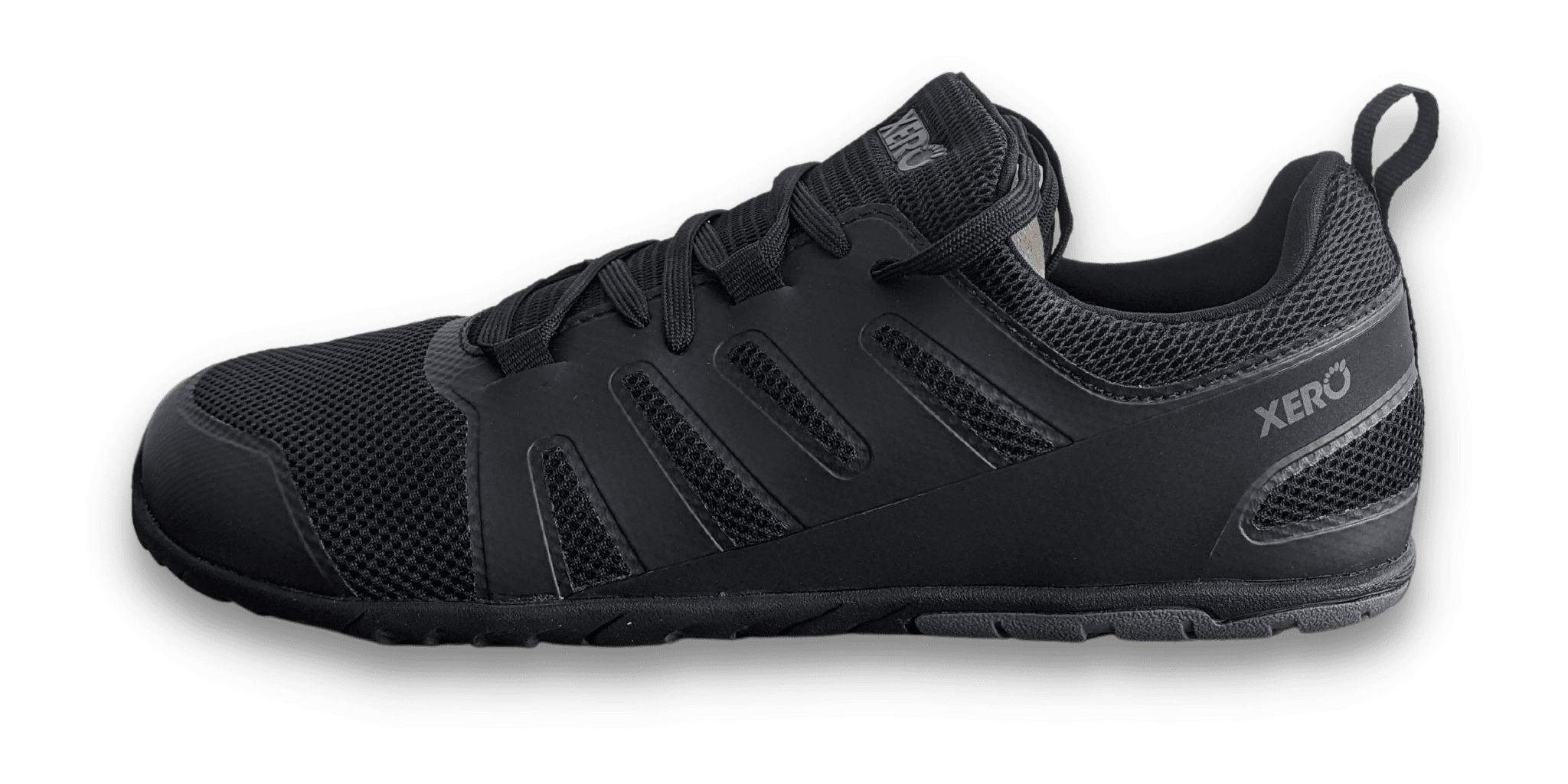
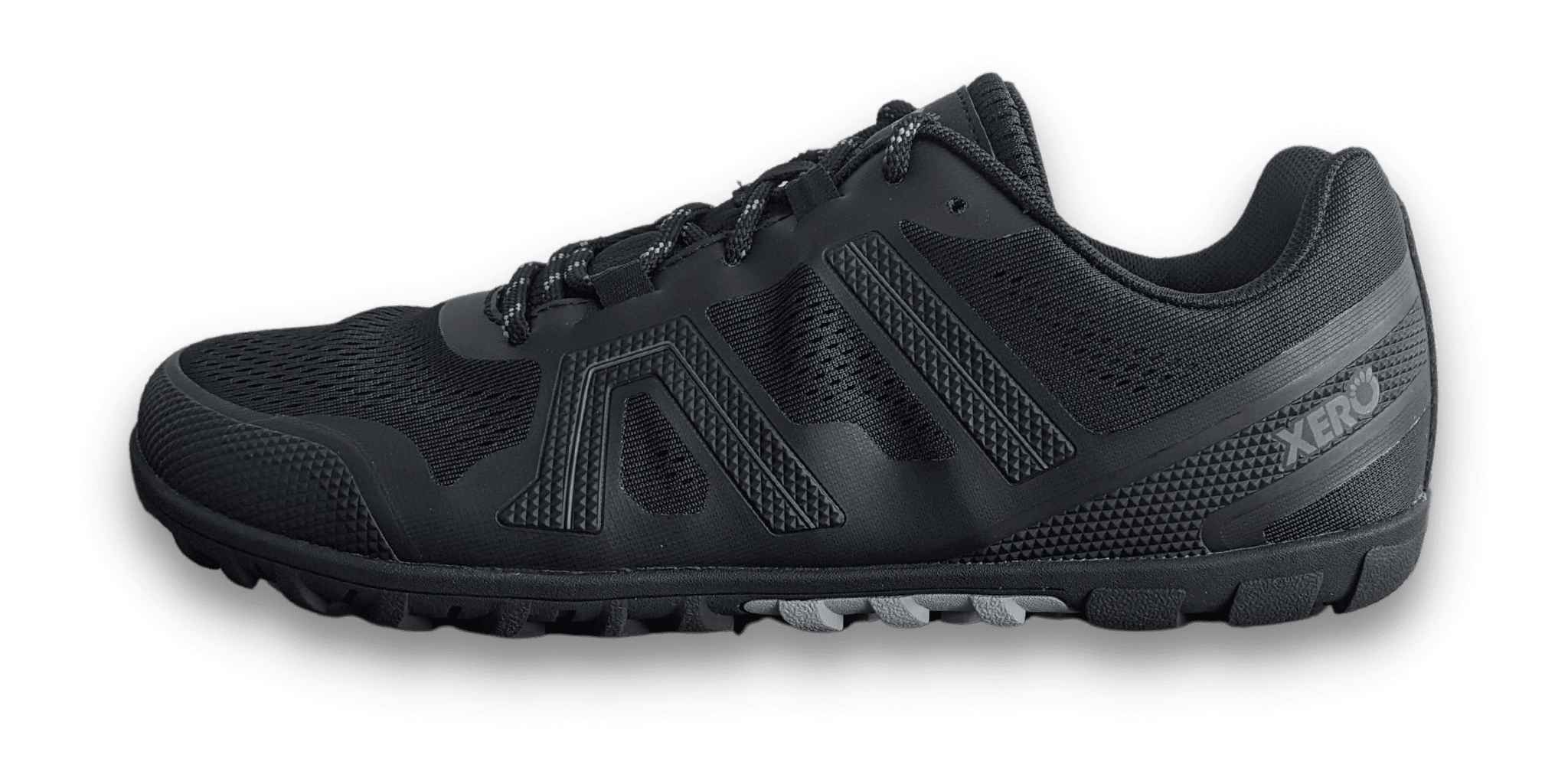


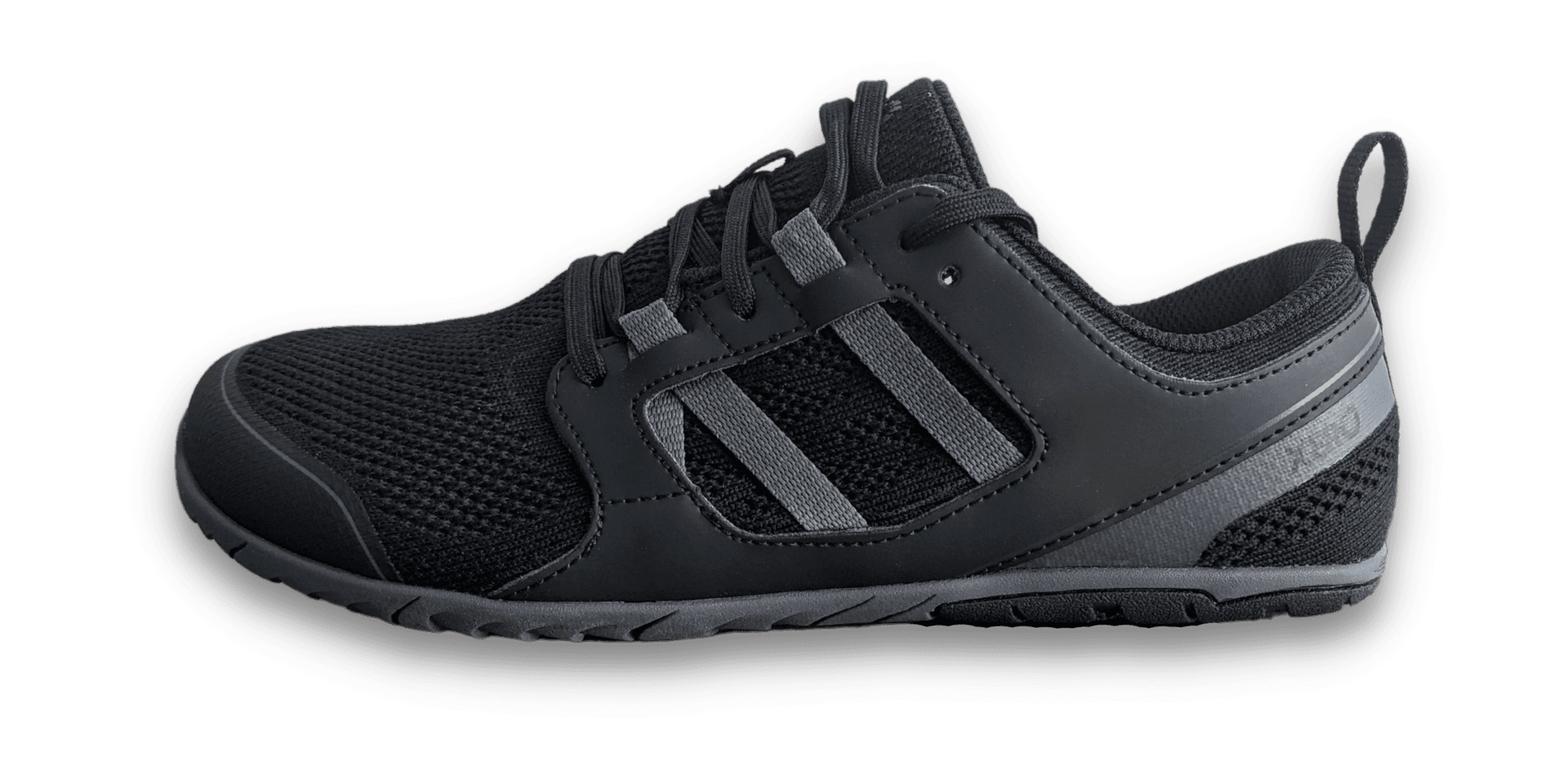
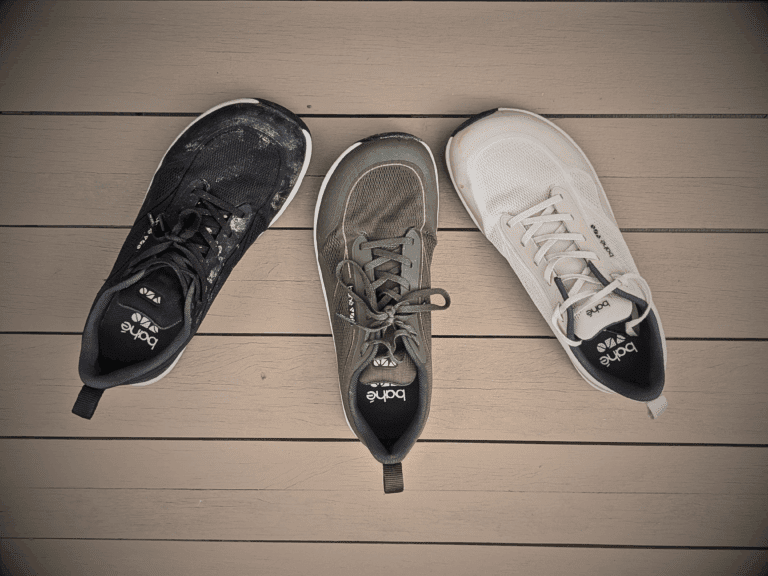

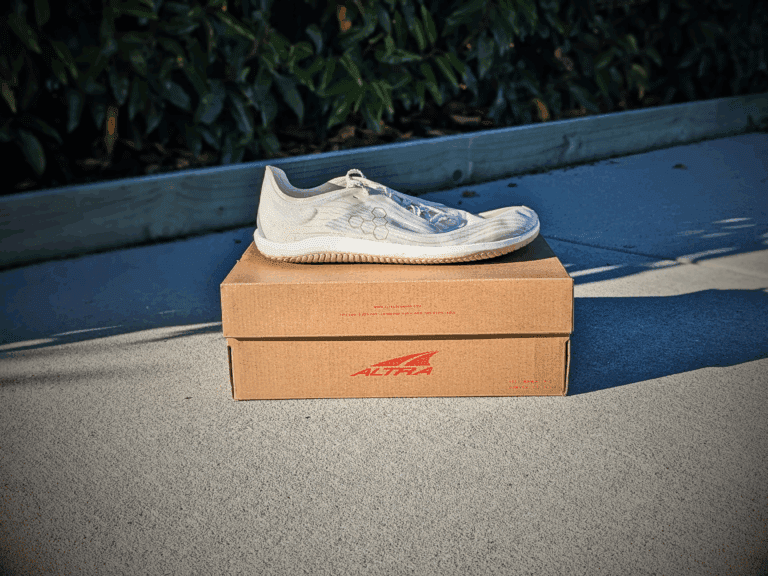
Hi there, these reviews are really helpful, thanks for this!
I got the Prio Neo in Men’s size 42 and they fit perfect.
Should I order the HFS and Mesa Trail II in 42.5 because they run smaller?
Regards, Paulo
Thanks for the kind words!
Number and naming gets tricky, so I’ll try and make sure we get this all right. Considering you’re an EU42 in the Prio Neo:
Xero Shoes HFS = 42.5
Xero Shoes Mesa Trail = 42.5
Xero Shoes HFS II = 42.5
Xero Shoes Mesa Trail II = 42
I’d only stick with the same size in the Mesa Trail II. The others I’d go half a size up. If you have access to the Speed Force II, I’d strongly recommend giving it a try too. It’s a great shoe! In a EU42.5